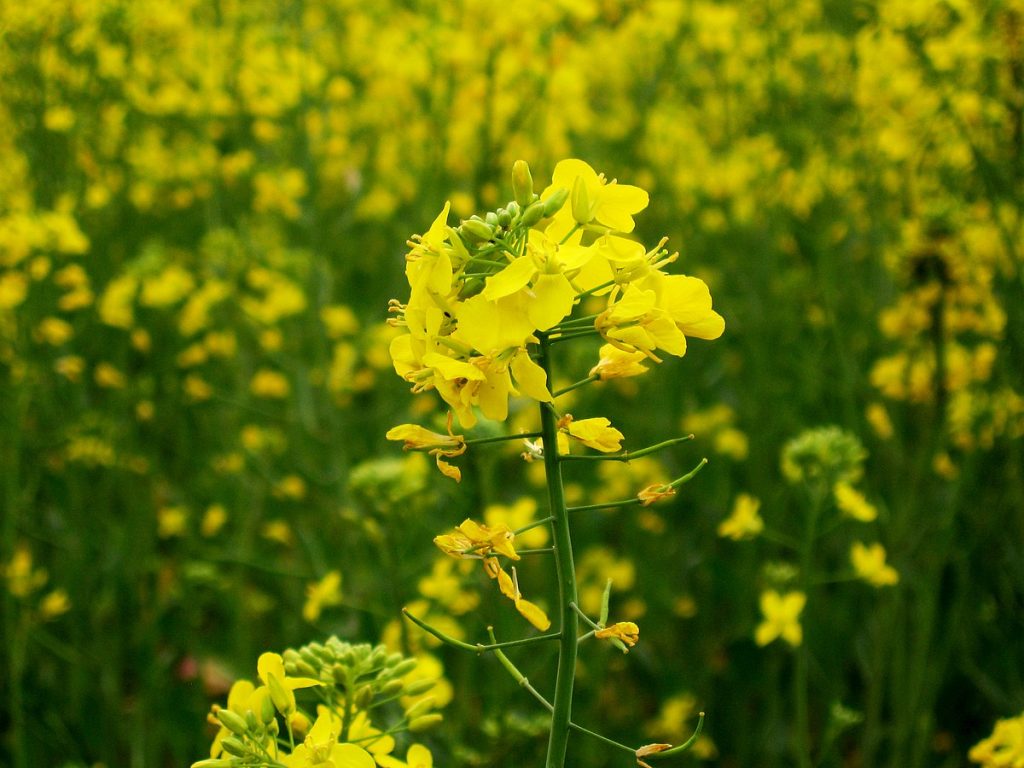Context:
The government argued that cultivating Genetically Modified (GM) crops, such as mustard, would reduce the cost of high-quality edible oil.
Genetically Modified (GM) Crops
- Genetically Modified (GM) Crops is a subtype of Genetically Modified (GM) Organisms.
- According to WHO, Genetically Modified Organisms (GMOs) can be defined as organisms (i.e. plants, animals, or microorganisms) in which the genetic material (DNA) has been altered in a way that does not occur naturally by mating and/or natural recombination.
- The technology is often called “modern biotechnology” or “gene technology”, sometimes also “recombinant DNA technology” or “genetic engineering”.
- Genetic engineering facilitates the transfer of specific genes from one organism to another, even across unrelated species.
- The resulting products, derived from or utilizing genetically modified (GM) organisms, are commonly referred to as GM foods or crops.
Purpose of Genetically Modified (GM) Crops
- Genetically modified (GM) crops, altered using genetic engineering, aim to introduce traits like pest resistance, disease resistance, and herbicide tolerance.
- These crops are also modified for increased nutritional value, pharmaceutical production, and biofuel development.
Production of GM Crops
- GM crops first introduced in the USA in the mid-1990s, are presently widely cultivated and used globally.
- In India, Bt cotton is the only approved GM crop, occupying over 90% of the country’s cotton area.
- GM crops R&D in India: Rice, Wheat,
Mustard cultivation
- Mustard, a vital Rabi crop (winter crop) in India, is traditionally sown between mid-October and late November.
- Conventional mustard varieties yield an average of 1,000-1,200 kilograms per hectare, whereas DMH-11 surpasses this with a global average exceeding 2,000-2,200 kgs.
- The introduction of DMH-11 marks a significant advancement, exhibiting a remarkable 30% increase in yields compared to existing varieties.
DMH-11
- DMH-11, short for Dhara Mustard Hybrid-11, represents a genetically-modified mustard variety.
- Engineered using the Genetic Male Sterility (GMS) technique, particularly the ‘barstar-barnase’ system, DMH-11 boasts herbicide resistance.
Mustard oil
- It is a popular cooking oil in many Indian homes.
- Mustard oil contains omega-3 fatty acids, vitamin E
Advantages of GMO Foods:
Pest Control:
- Genetic modification introduces protective genes, like the Bt gene from Bacillus thuringiensis, providing natural resistance to pests in crops such as corn, cotton, and soybeans.
- Reduced Pesticides: Insect-resistant GM corn, introduced in the U.S. in 1996, has reduced pesticide use by 90%, saving farmers time and resources.
- Improved Survival and Greater Yield: Some GMO crops are modified with genes that enhance survival under stressful conditions like droughts and resistance to diseases like blight which results in higher yields for farmers.
Increased Nutritional Value:
- Genetic modification can boost the nutritional content of foods, for example, golden rice with high beta-carotene to address vitamin A deficiency.
Sustainable Agriculture:
- GMO technology facilitates sustainable practices, such as no-till farming, which captures carbon from the atmosphere and enhances soil health.
Climate Change Mitigation:
- GM crops played a role in cutting greenhouse gas emissions equivalent to removing 15.6 million cars from the road.
Disadvantages of Genetically Modified (GM) Crops:
Ecosystem Disruption and Biodiversity Risks:
- Genetic engineering to produce desired traits may favor specific organisms, posing high risks to ecosystem disruption and biodiversity. This alteration can disturb the natural process of gene flow.
Increased Cultivation Costs and Marketization:
Development of Pest Resistance:
- Excessive production of GM crops with pest-resistant traits may lead to diminishing effectiveness over time. Pests could develop resistance to the toxins used as deterrents.
Herbicide Usage and Health Risks:
- Biologically altered GM foods may present risks to human health, necessitating a thorough evaluation of the impact on consumers.
- GMO crops engineered to resist herbicides, like Roundup, raise concerns about increased herbicide usage and associated health risks.
Global Conventions Related to Genetically Modified Organisms
Convention on Biological Diversity:
- Legally binding treaty for biodiversity conservation.
- Objectives include conserving biological diversity, sustainable use of components, and fair sharing of benefits from genetic resource utilization.
Cartagena Protocol on Biosafety:
- Focuses on transboundary movement of living modified organisms (LMOs).
- Addresses handling, transport, and use of GMOs, including those in animals.
Nagoya Protocol:
- Pertains to access to genetic resources and fair sharing of benefits from their utilization, including GMOs.
- Adopted in 2010 in Nagoya, Japan, at COP10.
- Entered into force in 2014.
Regulatory Framework for GMOs in India
Ministry of Environment, Forest and Climate:
- Governed by the Environment (Protection) Act, 1986.
- Oversight of all GMO-related activities, operations, and products.
Genetic Engineering Appraisal Committee (GEAC):
- Authorized body under the Ministry of Environment, Forest and Climate.
- Covers import, export, transport, manufacture, use, and sale of GMOs.
Environment Protection Act, 1986 (EPA):
- Approval from GEAC is mandatory for importing, exporting, transporting, manufacturing, storing, processing, using, or selling any GMOs, substances, or cells.
- Research involving pathogenic organisms, GMOs, or cells is permitted only in laboratories or designated areas notified by the Act.
- Scaling up or pilot operations with GMOs requires explicit permission from GEAC.
Biological Diversity Act, 2002:
- Approval and benefit-sharing agreements are required with the National Biodiversity Authority (NBA) for accessing Indian biological resources.
Plant Quarantine Order, 2003:
- Regulates import and export of GMOs, including GM plants and plant materials.
Food Safety and Standards Act, 2006:
- FSSAI empowered to establish safety standards for GMO-derived foods.
- Includes provisions for safety assessments ensuring suitability for human consumption.
Way Forward
- Promoting responsible GMO practices involves conducting thorough risk assessments before release, ensuring transparency.
- Collaborative research is crucial for understanding long-term GMO effects on the environment, biodiversity, and health.
- Engaging diverse stakeholders in discussions, implementing ongoing environmental monitoring, and designing GMOs for sustainable agriculture and biodiversity protection contribute to a comprehensive approach.
- International collaboration through standardized agreements ensures consistent and responsible global development, testing, and trade of GMOs.

